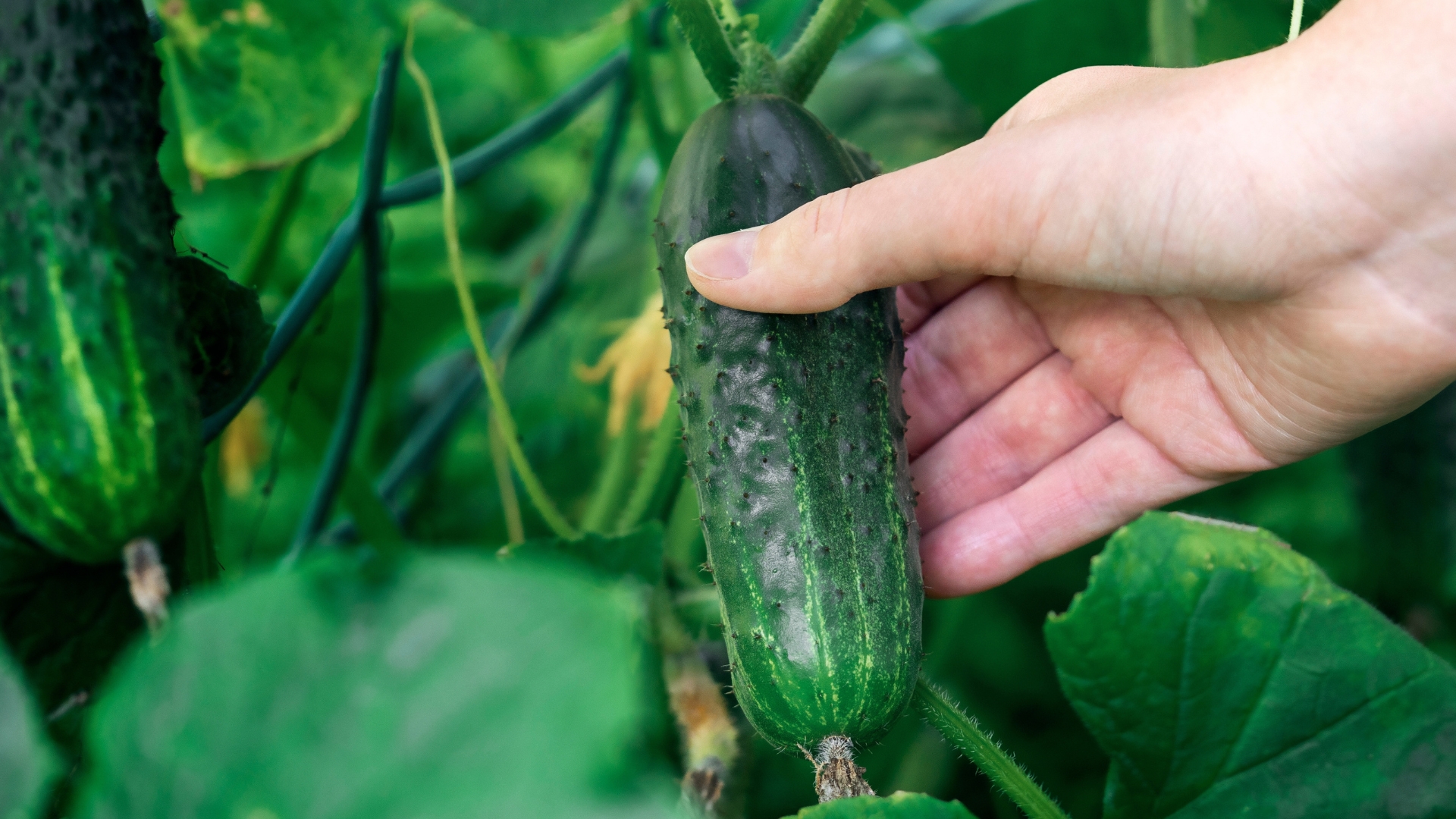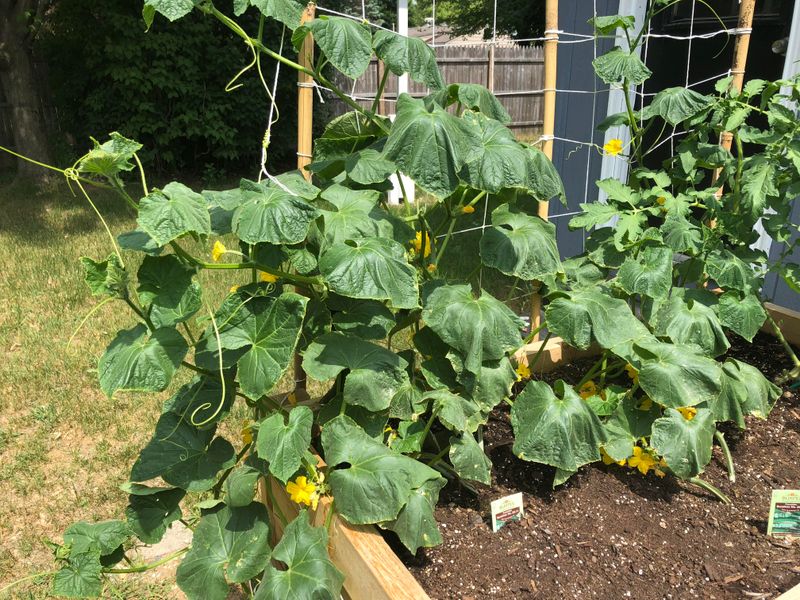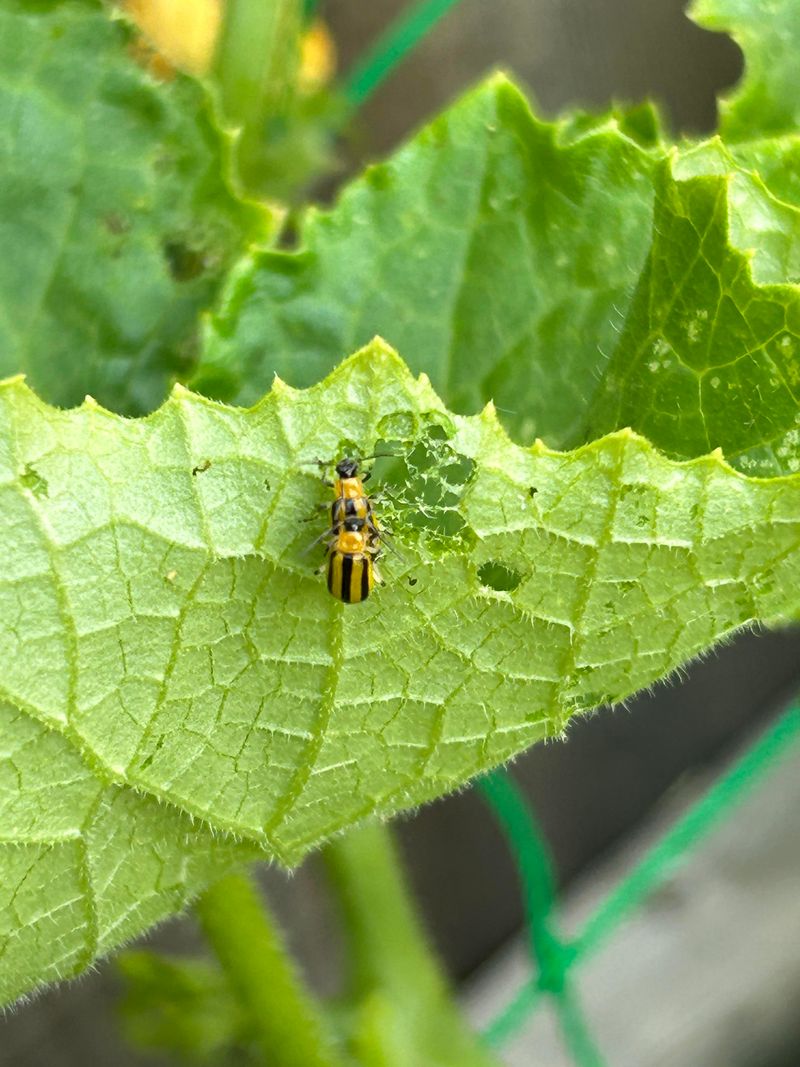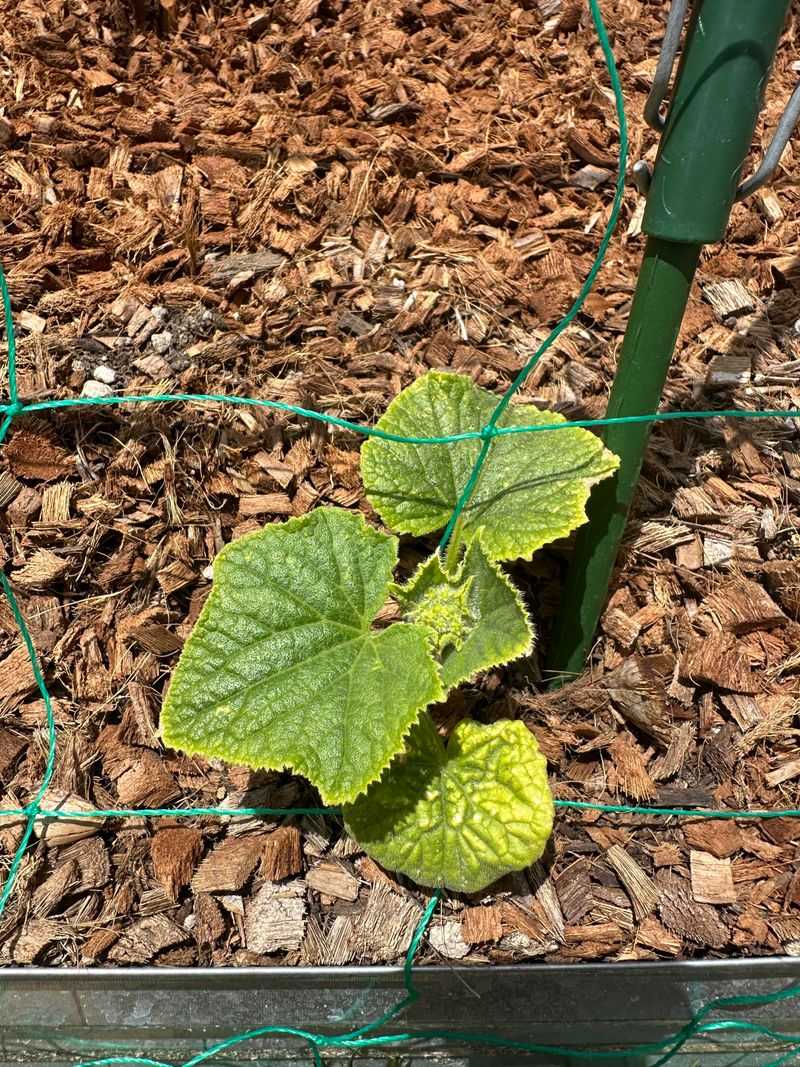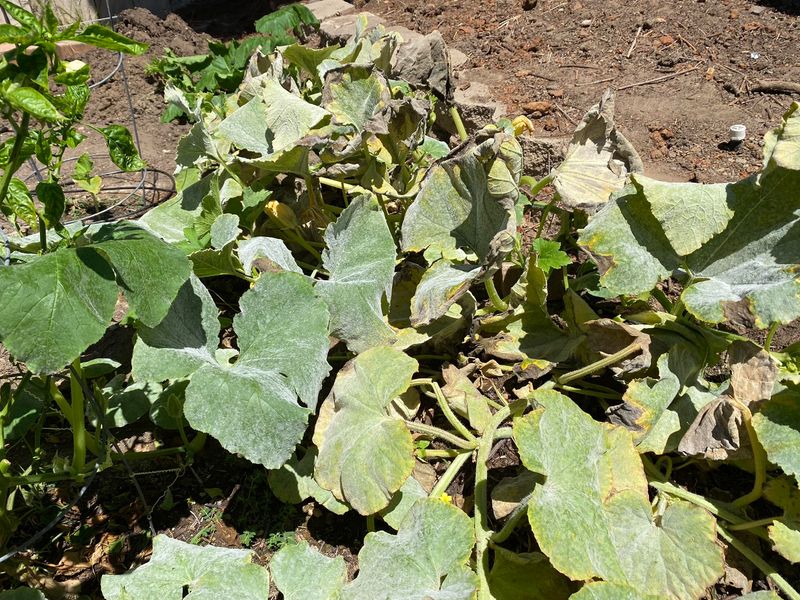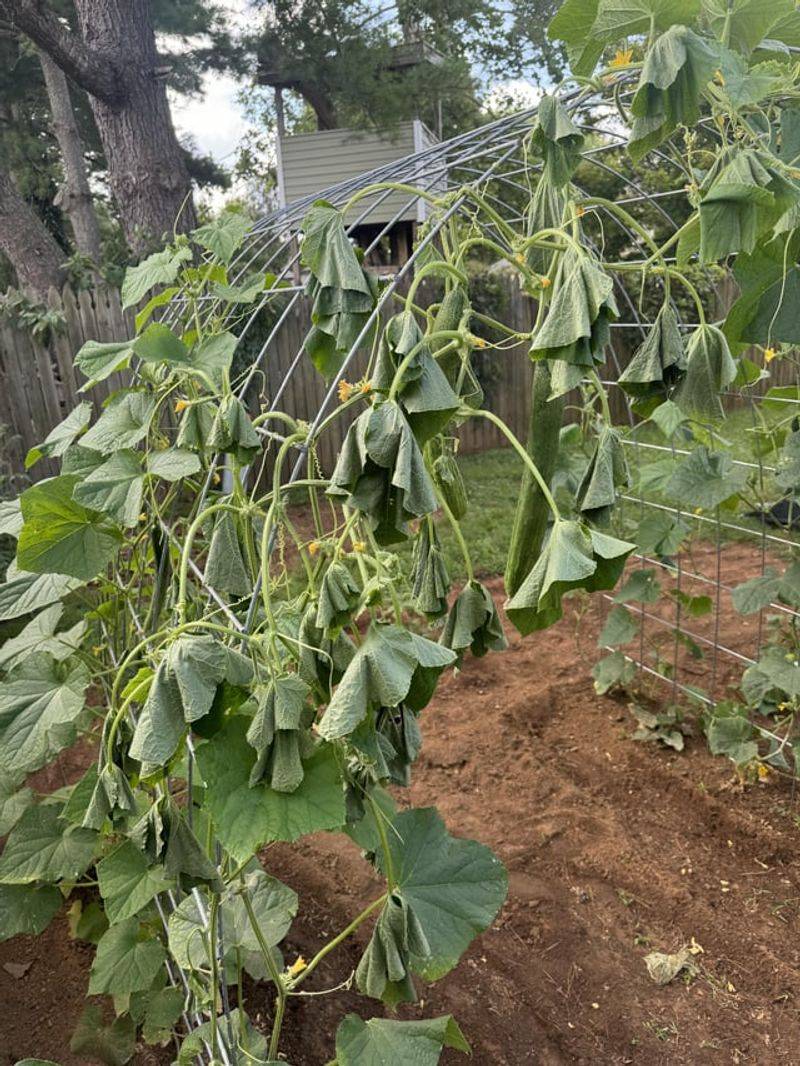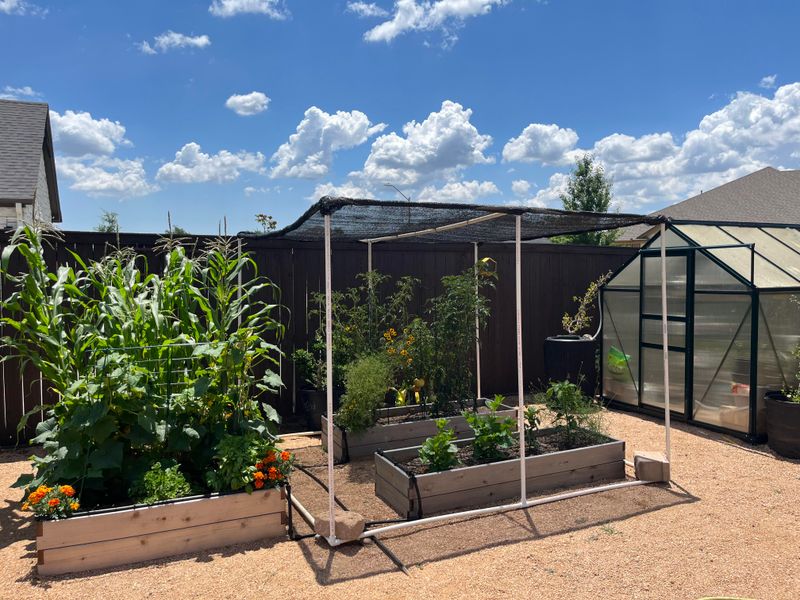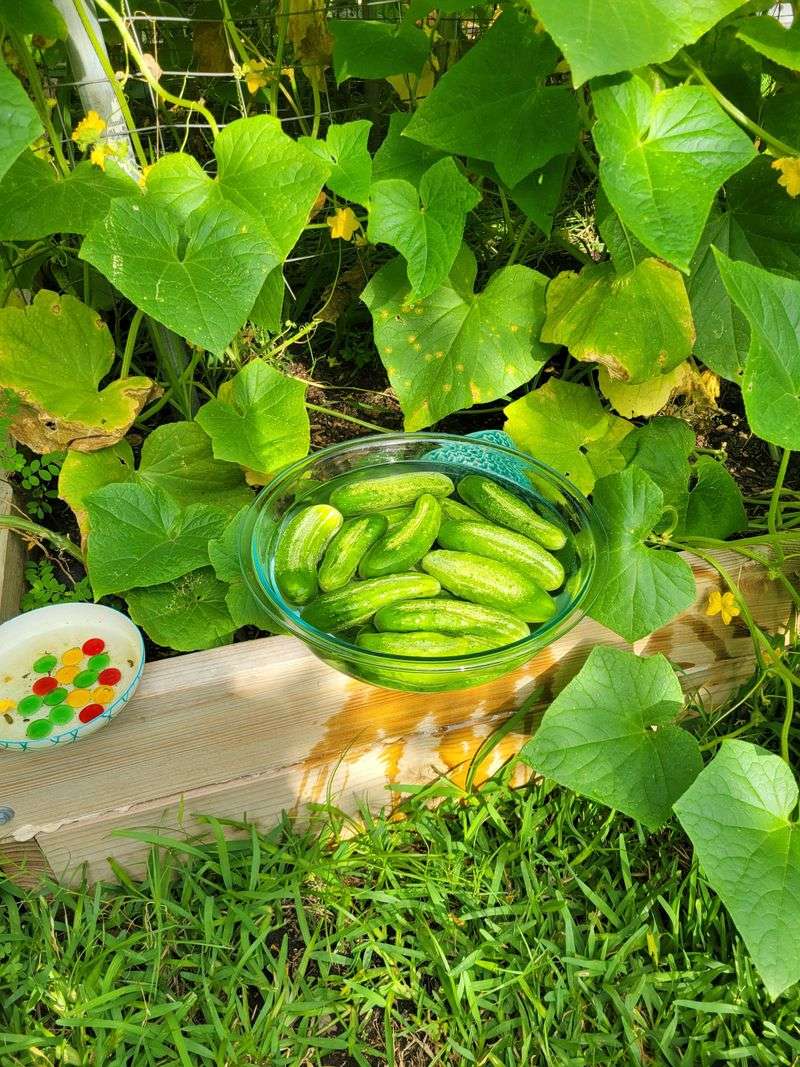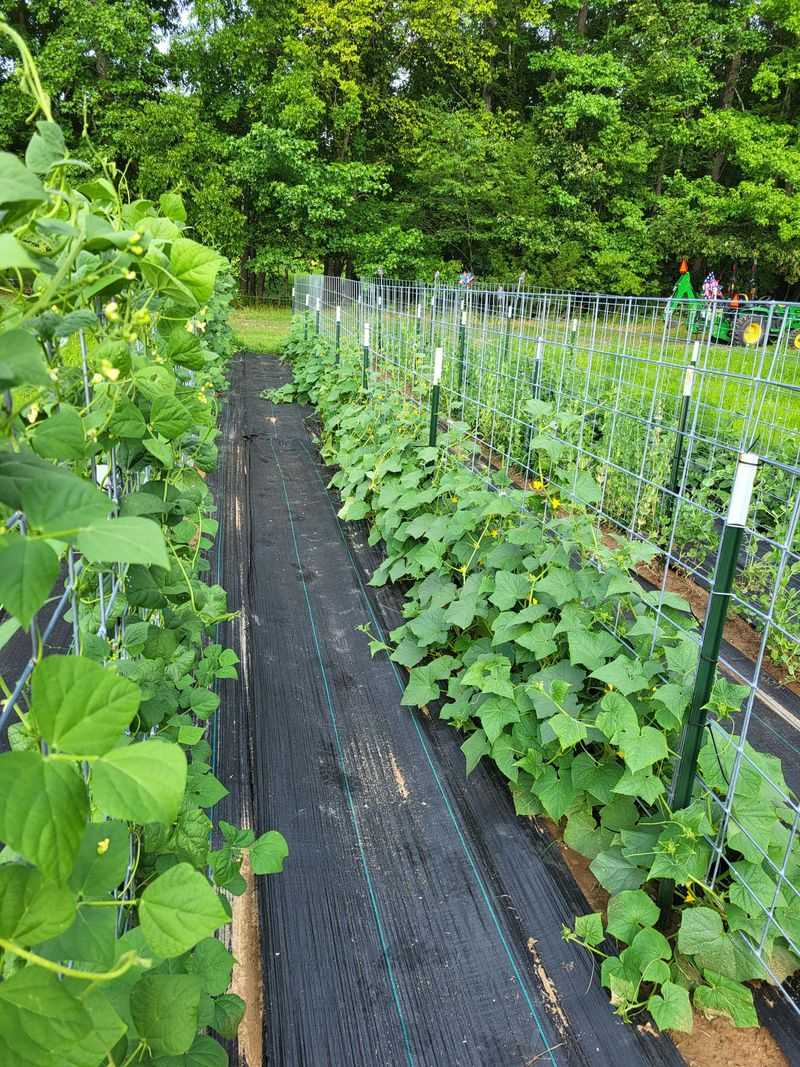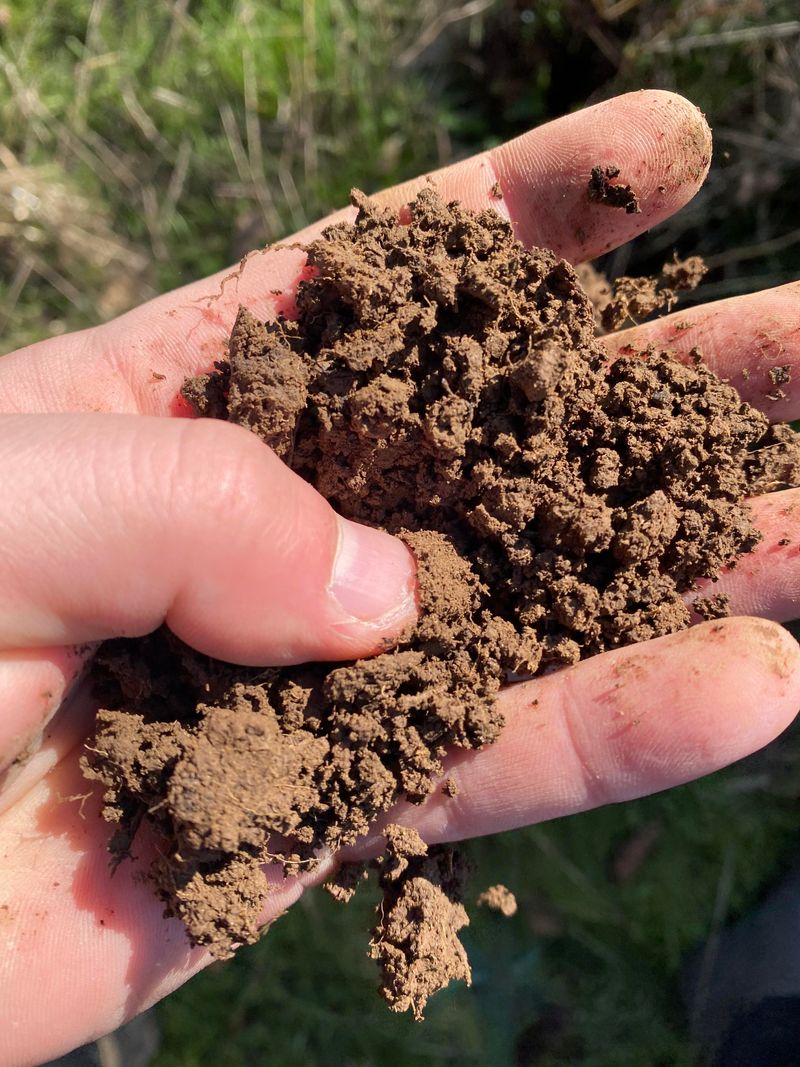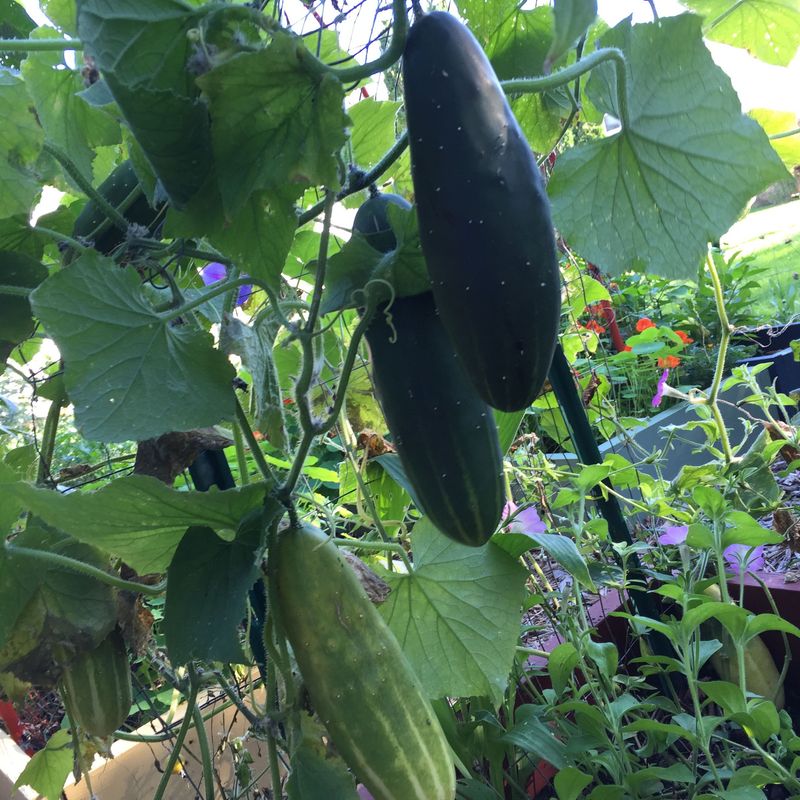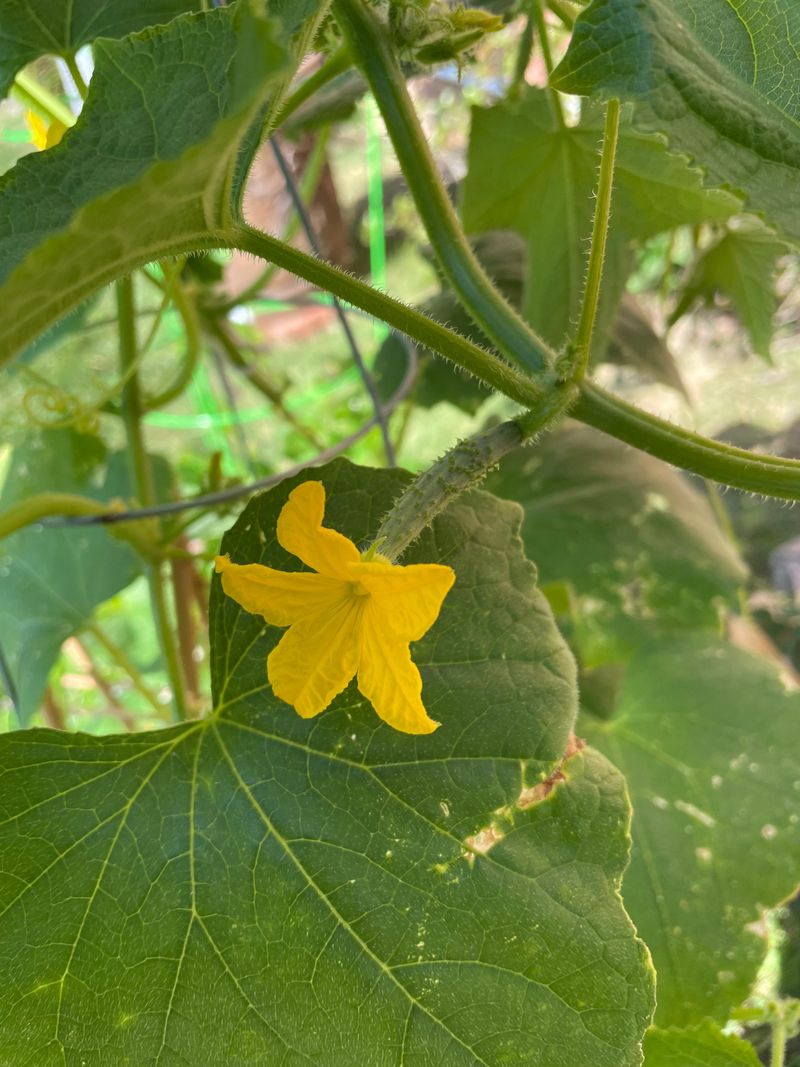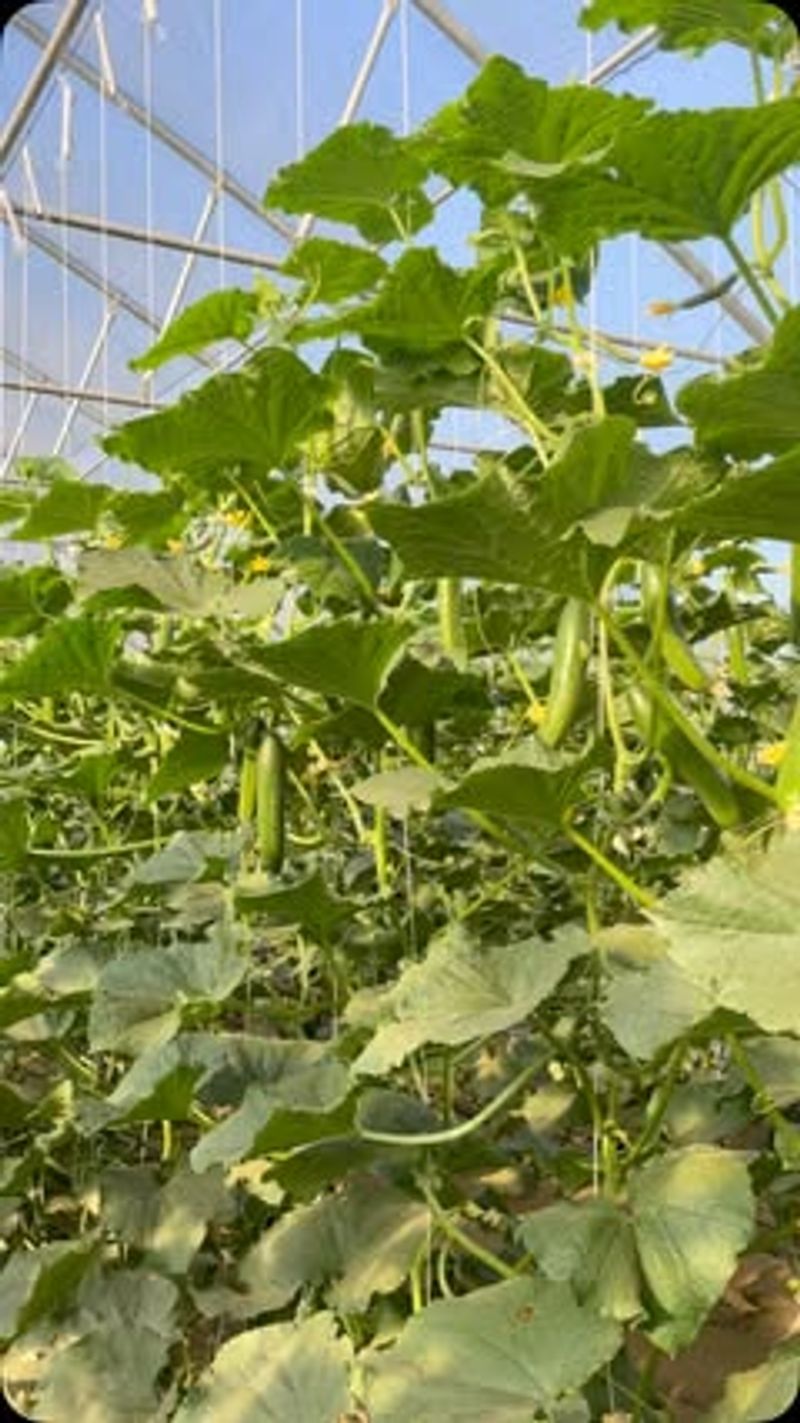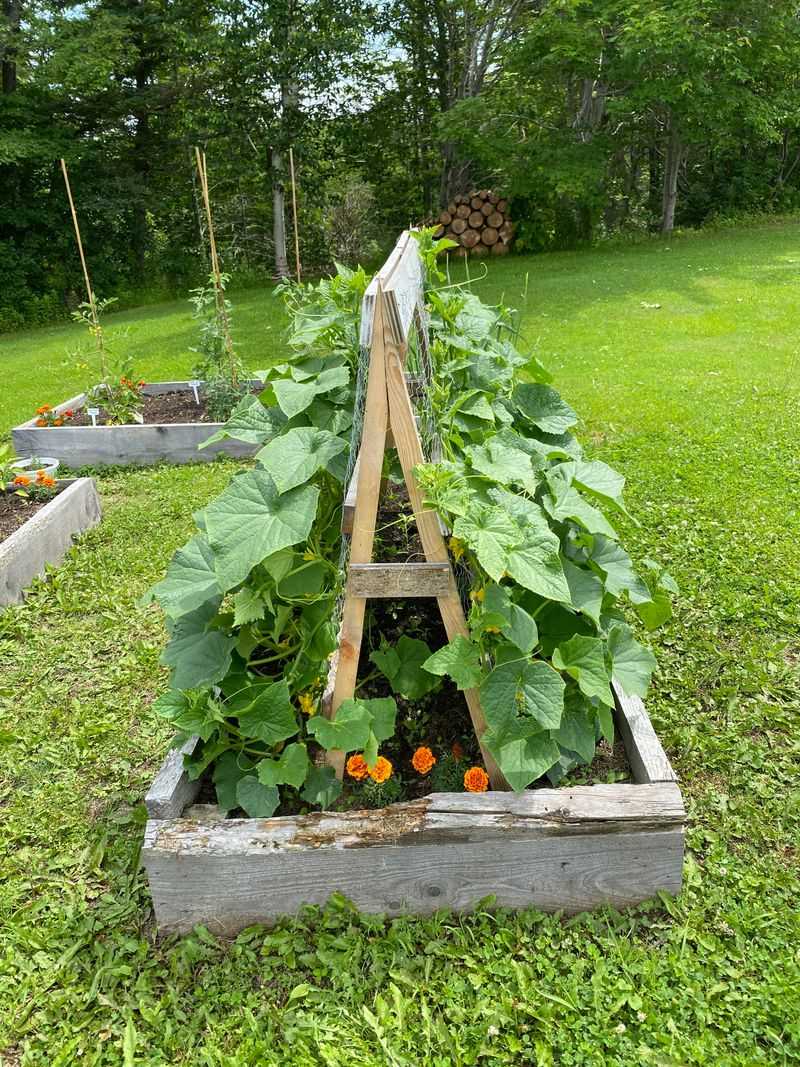My cucumbers were thriving… until suddenly, they weren’t—and I’m not the only one in Tennessee dealing with this. Between pests, heat stress, and sneaky diseases, they’ve got a lot working against them right now.
I’ve learned to spot the early signs and take action fast before the plants completely give up. A few simple fixes have helped mine bounce back just in time.
If your cucumbers are looking rough, here’s what might be going on and how to turn things around.
1. Excessive Heat Waves
Tennessee’s scorching summer temperatures have been pushing cucumbers past their comfort zone. When thermometers climb above 90°F for extended periods, cucumber plants become stressed and stop producing flowers.
The extreme heat waves rolling across the Volunteer State cause pollen to become sterile, resulting in fewer successful pollinations. Even established plants will drop blossoms rather than develop fruits during these hot spells.
2. Inconsistent Rainfall Patterns
Erratic precipitation has left many Tennessee cucumber patches struggling between drought and deluge. Cucumbers need steady moisture to develop properly, with sudden changes causing bitter fruits or blossom end rot.
Throughout the state, gardeners report cucumber plants that initially thrived then crashed when rainfall patterns shifted. The shallow root systems of these plants make them particularly vulnerable to Tennessee’s unpredictable summer weather.
3. Cucumber Beetle Infestations
Striped and spotted cucumber beetles have been particularly aggressive in Tennessee gardens this year. These persistent pests transmit bacterial wilt disease while feeding on leaves, stems, and roots.
Many gardeners across Tennessee report seeing the telltale yellow and black beetles earlier than usual this season. Once bacterial wilt infects a cucumber plant, it causes rapid wilting as the pathogen blocks water movement through the plant’s vascular system.
4. Poor Soil Conditions
Tennessee’s clay-heavy soils present unique challenges for cucumber growth. Without proper amendments, these dense soils compact easily, restricting root development and limiting nutrient availability.
Many gardeners across the state struggle with this issue, not realizing their soil pH might be too acidic or alkaline for optimal cucumber production. Compacted clay soils also drain poorly after Tennessee’s heavy summer thunderstorms, leaving roots sitting in waterlogged conditions.
5. Powdery Mildew Spread
Tennessee’s combination of high humidity and warm temperatures creates perfect conditions for powdery mildew to thrive on cucumber plants. The white powdery coating appears first on older leaves before spreading throughout the plant.
Gardeners across the Volunteer State often notice this fungal disease after summer rain followed by hot, humid days. As the mildew progresses, leaves yellow and die, reducing the plant’s ability to photosynthesize and produce healthy cucumbers.
6. Implement Proper Watering Techniques
Morning watering gives cucumber plants time to dry before evening, reducing disease risk in Tennessee’s humid climate. Aim for deep watering sessions rather than frequent light sprinklings.
Consistent soil moisture prevents the stress that leads to bitter cucumbers, a common complaint among Tennessee gardeners. Consider installing soaker hoses or drip irrigation to deliver water directly to roots while keeping foliage dry.
7. Mulch Thoroughly
Applying a 2-3 inch layer of organic mulch around cucumber plants helps maintain consistent soil moisture across Tennessee’s variable summer conditions. Straw, shredded leaves, or pine needles work excellently for this purpose.
Tennessee gardeners find that proper mulching not only conserves moisture but also suppresses weeds competing for nutrients. As an added benefit, mulch creates a clean barrier between fruits and soil, reducing disease and pest issues common in the state.
8. Create Shade Structures
Temporary shade cloth structures can protect cucumber plants during Tennessee’s intense afternoon heat. 30-40% shade cloth allows sufficient light while reducing temperature stress during heatwaves.
Many clever Tennessee gardeners use old window screens or plant taller crops like sunflowers on the western side of cucumber beds. These natural shade solutions help protect sensitive plants during the hottest part of the day without reducing essential morning sun exposure.
9. Plant Heat-Tolerant Varieties
Arkansas Little Leaf and Marketmore 76 cucumber varieties have proven particularly resilient to Tennessee’s hot summers. These heat-tolerant cultivars continue producing when standard varieties struggle.
Local Tennessee gardeners also report success with Southern Delight and Diva varieties during challenging growing seasons. Selecting regionally-appropriate varieties adapted to the state’s conditions gives gardeners a significant advantage against summer heat and humidity challenges.
10. Implement Companion Planting
Nasturtiums planted near cucumbers act as trap crops for aphids and beetles in Tennessee gardens. Marigolds also help repel cucumber beetles while attracting beneficial pollinators to your garden beds.
Smart Tennessee gardeners incorporate dill and sunflowers nearby to attract predatory insects that feed on cucumber pests. This strategic companion planting creates a balanced garden ecosystem that naturally reduces pest pressure without chemical interventions.
11. Improve Soil Structure
Tennessee’s clay soils benefit tremendously from regular additions of compost and organic matter. Working these amendments into garden beds creates better drainage and root penetration for cucumber plants.
Many successful gardeners across the Volunteer State build raised beds filled with amended soil to bypass native clay problems altogether. Adding expanded shale or coarse sand can also help break up stubborn clay while increasing oxygen availability to cucumber roots.
12. Practice Crop Rotation
Planting cucumbers in the same location year after year leads to disease buildup in Tennessee gardens. Implement a three-year rotation plan, keeping track of where cucurbit family plants grow each season.
Many Tennessee gardeners find that alternating cucumber beds with legumes like beans helps restore soil nitrogen naturally. This strategic rotation breaks disease cycles while maintaining soil fertility without excessive fertilizer applications.
13. Hand Pollinate Flowers
During Tennessee’s hottest weeks, natural pollination often decreases as bee activity diminishes. Use a small paintbrush to transfer pollen from male flowers (those without tiny cucumbers behind them) to female flowers.
Many Tennessee gardeners have saved their cucumber harvests by hand-pollinating during early morning hours when pollen is most viable. This simple technique can dramatically increase fruit set during challenging weather conditions when pollinators are scarce.
14. Apply Organic Pest Controls
Neem oil spray effectively manages cucumber beetles and aphids without harming beneficial insects in Tennessee gardens. Apply early morning or evening when pollinators are less active.
Many Tennessee gardeners successfully use diatomaceous earth sprinkled around plant bases to deter crawling pests. For severe infestations, insecticidal soaps provide targeted control while breaking down quickly, minimizing environmental impact across the state’s diverse ecosystems.
15. Trellis Your Cucumbers
Vertical growing significantly reduces disease pressure by improving air circulation around cucumber plants in Tennessee’s humid climate. Simple A-frame or fence trellises keep fruits clean and make harvesting easier.
Many Tennessee gardeners report harvesting twice as many cucumbers from trellised plants versus those allowed to sprawl on the ground. The improved sun exposure also results in more uniform fruits with fewer yellow spots common in ground-grown cucumbers.

